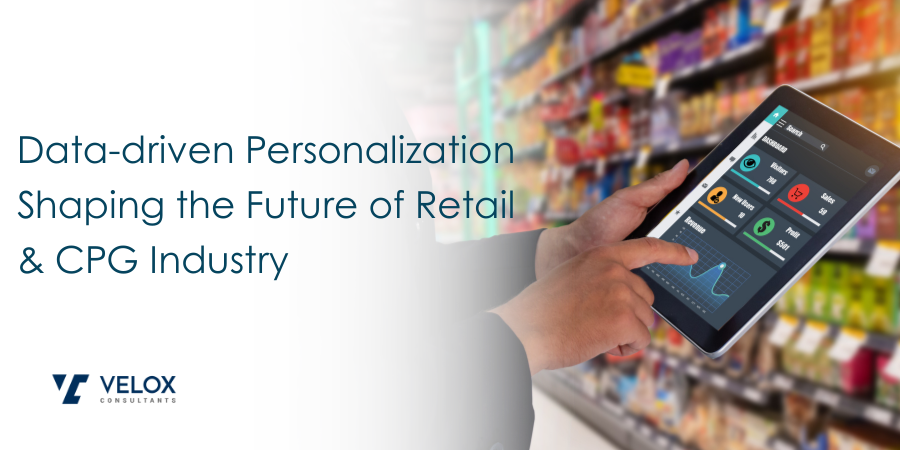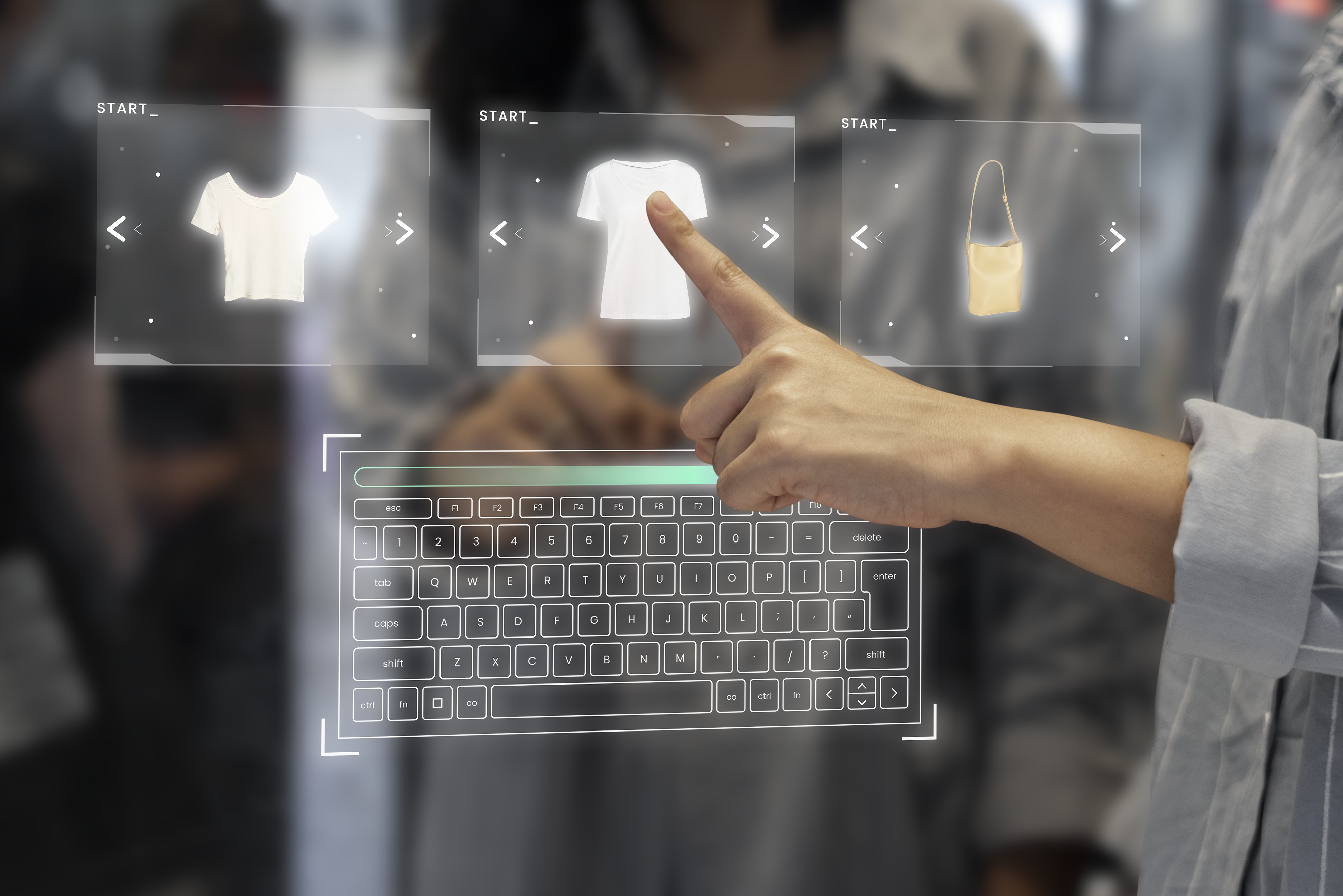
In today's digital age, the Retail and Consumer Packaged Goods (CPG) industry is undergoing a paradigm shift driven by data and personalization. Retailers and CPG companies leverage vast amounts of data to tailor experiences, products, and services to individual customers, thus creating a more engaging and effective interaction. This transformation is largely fueled by advancements in data analytics, machine learning, and artificial intelligence, which enable businesses to understand consumer behaviour and preferences with unprecedented accuracy.
The global retail market is projected to reach approximately $32 trillion in 2024, with a CAGR of around 8.5% from 2023.
The CPG market is expected to grow robustly, leveraging AI and analytics to achieve over 10% revenue through improved demand forecasting and personalized consumer experiences. The major drivers behind this growth include the rising adoption of e-commerce, increased consumer spending, and the proliferation of digital touchpoints that generate vast amounts of data.
Several key factors are driving the shift towards data-driven personalization:
Despite the transformative potential of data-driven personalization, the retail and CPG industry faces several significant challenges in effectively implementing these strategies. These challenges span data privacy and security, data integration, data quality, technological barriers, and consumer trust. Addressing these issues is crucial for retailers to leverage data-driven personalization and deliver enhanced customer experiences successfully.
The retail and CPG industry faces several significant challenges in implementing data-driven personalization. Addressing these challenges requires a strategic approach, investment in technology and expertise, and a commitment to data privacy and security. By overcoming these obstacles, retailers can unlock the full potential of data-driven personalization and deliver enhanced customer experiences that drive engagement, loyalty, and growth.
The retail and CPG industry continuously evolves, driven by emerging business trends and technological advancements. These trends and technologies reshape how businesses operate, engage with customers, and create value. Some of the key trends are:
Omnichannel Personalization: One of the most significant trends is the move towards omnichannel personalization. Consumers today interact with brands across multiple touchpoints, including physical stores, websites, mobile apps, and social media. Retailers are focusing on creating seamless, personalized experiences across all these channels. For example, a customer might receive personalized recommendations on a retailer's website based on their in-store purchase history.
For Example, Sephora has successfully implemented an omnichannel personalization strategy by integrating its online and offline channels. Customers can use the Sephora mobile app to receive personalized recommendations, access virtual try-on features, and track their purchase history.
Artificial Intelligence and Machine Learning: AI and machine learning are at the forefront of personalization. These technologies enable retailers to analyze vast amounts of data and derive insights that can be used to tailor experiences at an individual level. For instance, machine learning algorithms can predict a customer's next purchase based on their past behaviour and suggest relevant products. AI-powered chatbots and virtual assistants provide personalized customer service, answer queries, and offer product recommendations. They enhance customer engagement and improve operational efficiency.
For Example, Netflix uses AI and machine learning to personalize user content recommendations. The platform analyses viewing history, ratings, and behaviour patterns to suggest movies and TV shows that match individual preferences.
Real-time Personalization: Real-time personalization involves tailoring the customer experience at the moment based on real-time data. This can include personalized website content, dynamic pricing, and targeted promotions. For example, an online retailer might use real-time data to discount an item a customer has been browsing but has not yet purchased. In-memory computing allows for fast data processing and analysis, enabling real-time decision-making and personalization, while streaming analytics platforms process data as it is generated, providing immediate insights that can be used for real-time personalization.
For Example, Amazon leverages real-time personalization to enhance the shopping experience. The platform uses real-time data to display personalized product recommendations, dynamic pricing, and targeted promotions based on the customer's browsing and purchase history.
Voice Commerce and Personalization: With the rise of voice assistants like Amazon Alexa and Google Assistant, voice commerce is becoming increasingly popular. Retailers are exploring ways to personalize interactions through these devices. For instance, a voice assistant could offer personalized shopping lists or product recommendations based on a user's past purchases and preferences. Voice assistants can also offer personalized updates on order status, delivery times, and relevant promotions. Technologies like NLP enable voice assistants to understand and interpret user commands, allowing for more accurate and relevant responses.
For Example, Walmart has integrated its shopping experience with Google Assistant, allowing customers to use voice commands to add items to their shopping carts, create shopping lists, and place orders. The system leverages AI to provide personalized product recommendations and offers based on the user's purchase history.
Augmented Reality (AR) and Virtual Reality (VR): AR and VR technologies enhance the shopping experience by providing immersive and interactive experiences. These technologies can help customers visualize products, try them before purchasing, and make more informed decisions. AR and VR can increase customer engagement, reduce return rates, and drive sales. AR enables customers to try on products like clothing, accessories, and cosmetics virtually, helping them make better purchasing decisions. VR creates immersive virtual showrooms where customers can explore products, learn about features, and interact with virtual sales assistants.
For Example, IKEA uses AR through its "IKEA Place" app, allowing customers to visualize how furniture and home decor items will look in their homes. The app uses AR technology to place virtual furniture in real-world settings, helping customers make informed purchasing decisions.
Data-driven personalization in the retail and CPG industry offers numerous use cases and applications that can significantly enhance customer experiences, optimize operations, and drive business growth.
The below image showcases some key use cases and applications:
Data-driven personalization offers many use cases and applications that can significantly enhance the retail and CPG industry. By adopting these data-driven personalization strategies, retailers can increase customer satisfaction, drive sales, and build long-term loyalty. As technology advances, the potential for personalization in the retail and CPG industry will only grow, making it an essential component of any successful business strategy.
India's retail and CPG market presents a unique landscape with immense growth potential. The market is characterized by a rapidly growing middle class, increasing disposable incomes, a young and tech-savvy population, and a burgeoning e-commerce sector. These factors create a fertile ground for data-driven personalization, enabling retailers to cater to the diverse preferences and behaviours of Indian consumers.
The Indian retail and CPG market holds immense potential for data-driven personalization. To capitalize on this opportunity, retailers must adopt a strategic approach that addresses the unique challenges and leverages the specific dynamics of the Indian market. By addressing the unique challenges and leveraging the specific dynamics of the market, retailers can create personalized experiences that drive engagement, loyalty, and growth. Investing in technology, focusing on localization, leveraging social media, and prioritizing data privacy will be crucial for success in India's data-driven retail era.
Data-driven personalization is no longer a luxury but a necessity for retailers and CPG companies looking to stay competitive in today's market. The benefits are clear: increased customer engagement, higher conversion rates, and improved customer loyalty. However, achieving effective personalization requires a strategic approach and a strong focus on data.
Here are our key recommendations for retailers and CPG companies looking to implement data-driven personalization:
In conclusion, data-driven personalization is transforming the retail and CPG industry. By leveraging data and advanced analytics, retailers can create more engaging, relevant, and effective customer experiences. As technology continues to evolve, the potential for personalization will only grow, making it an essential strategy for any retailer or CPG company looking to thrive in the digital age.
In the fast-paced business world, staying ahead of the competition requires timely and accurate insights. Velox Consultants has recently launched real-time market research services that deliver just that—providing actionable intelligence as events unfold. Whether it's monitoring industry trends, analyzing competitor activities, or understanding consumer preferences, our comprehensive market monitoring and consumer insight services ensure you have the data you need right when needed. This immediate access to up-to-the-minute data empowers your strategic moves and gives you a competitive edge in a constantly evolving market landscape.
Contact us at consult@veloxconsultants.com to learn more about our real-time market research services.




